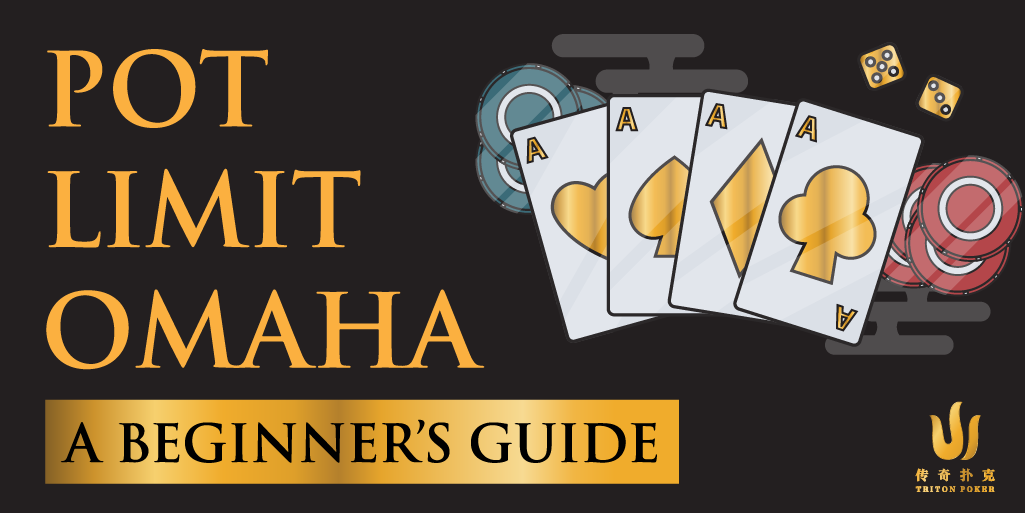Written by Lee Davy
Introduction
Pot-Limit Omaha, or PLO for short, is the second most common form of poker behind No-Limit Hold’em (NLHE). The game has existed in brick and mortar cardrooms and casinos for decades but rose in popularity through the increase and exposure of high stakes cash game battles across Full Tilt Poker in the mid-2000s featuring the likes of Tom Dwan, Viktor Blom, Patrik Antonius, Phil Ivey, and Phil Galfond.
Variants
In it’s rawest form, Omaha is a game played with four hole cards, although versions with five and six cards have also caught on. In this guide, we will focus on the four-hole card version.
There are also different forms of Omaha.
Variants include No-Limit Omaha, and also Hi/Lo versions. Omaha is also a mainstay in any Mixed Game, and mixed No-Limit Hold’em/Omaha games have become increasingly popular over the years. For this guide, we will focus on Pot-Limit Omaha (PLO).
Finally, Omaha is a game that transfers well to both cash games and tournaments. While it’s more prevalent in cash games, all of the major live and online operators have Omaha games in their schedules, including The Triton Poker Series.
Define ‘Pot-Limit’?
The term “Pot-Limit” restricts betting to the size of the pot, so you can’t overbet the pot, or move ‘All-In’ as you can in No-Limit games. The “Pot-Limit’ restriction is typically added to games to lower the variance of bankroll swings where you are more likely to flop strong made hands or draws, such as Omaha.
Calculating Pot Size
The game is $1/$2 PLO, meaning the Small Blind (SB) has placed $1 into the pot, and $2 for the Big Blind (BB). The next player to act calls for $2, and you want to raise the maximum.
What would be the size of your raise?
We calculate the size of the pot as thus: $1 from the SB, $2 for the BB, and $2 for the caller = $5. You can also call, for $2, making the pot $7, so theoretically you can raise an additional $7 – so your maximum bet in this spot is $9 ($2 for the call, and $7 for the raise).
The Rules
The DNA of the game plays similar to No-Limit Hold’em, with some notable exceptions.
The dealer hands each player four hole cards, and you can use any two to make the best five card hand using three community cards. The community cards arrive in the same was as NLHE with a pre-betting round, a flop, a turn, and a river with more betting rounds available after dealing each street.
An Example Hand:
The Board: AdQdTh5c3d
Hero: 7s6c4d2d
Villain: AhAcKdKh
In this hand, the Hero wins with an ace high flush, using the {4d} and {2d} in their hand, and the {Ad} {Qd] [3d] from the board. The Villain’s best hand is Trip Aces using {Ah} {Ac} in their hand, and {Ad} {Qd} {Th} from the board.
Now let’s look at a common mistake:
The Board: AdQdTd5c3d
Hero: 7s6c4d2d
Villain: AhAcKdKh
In this hand, the Hero wins with the ace high flush, using the {4d} and {2d} in their hand, and the {Ad} {Qd] [Td] from the board. The Villain’s best hand is still Trip Aces using {Ah} {Ac} in their hand, and {Ad} {Qd} {Td} from the board, but you may erroneously think the Villain also has a flush, as there are four diamonds on the board, and one in the Villains hand, but remember, you have to use two of your hole cards to make a five-card hand.
NLHE to PLO: The Transition
PLO is popular because it provides the player with more opportunity to play given you have more hole-cards leading to more starting hand computations – and this leads to the most common mistake shifting from NLHE to PLO – playing too many hands.
Developing a strong starting hand strategy is crucial when starting in the PLO games because you are going to be up against the nuts or hands that draw to the nuts more commonly than in NHLE. With this in mind, a key focus for you when learning PLO is to start with hands that can flop the nuts or draws to the nuts.
Starting Hands
When choosing starting hands in PLO, one factor you should look out for is to have double-suited hands whenever possible as this increases the variety of ways you can win the hand.
Here are the Top 30 starting hands in PLO (double-suited).
| 1. A-A-K-K | 11. K-Q-J-T | 21. Q-Q-A-K |
| 2. A-A-J-T | 12. K-K-T-T | 22. Q-Q-A-J |
| 3. A-A-Q-Q | 13. K-K-A-Q | 23. Q-Q-A-T |
| 4. A-A-J-J | 14. K-K-A-J | 24. Q-Q-K-J |
| 5. A-A-T-T | 15. K-K-A-T | 25. Q-Q-K-T |
| 6. A-A-9-9 | 16. K-K-Q-J | 26. Q-Q-J-T |
| 7. A-A-x-x | 17. K-K-Q-T | 27. Q-Q-J-9 |
| 8. J-T-9-8 | 18. K-K-J-T | 28. Q-Q-9-9 |
| 9. K-K-Q-Q | 19. Q-Q-J-J | 29. J-J-T-T |
| 10. K-K-J-J | 20. Q-Q-T-T | 30. J-J-T-9 |
As you can see, it’s still precious to hold big pairs, as in NLHE, with the exception that as you have four hole-cards, redraw possibilities are also extremely important. It’s for this reason that AAJT (double-suited) ranks as the #2 best starting hand as you have the power of a pair of aces versus Broadway straight and nut flush potential.

